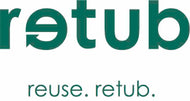Start small. We can all arrive at a low-waste destination if we simply take the first step of the journey and keep going. Seeing yourself achieve small goals encourages you to take that next step. On the other hand, if you try to completely overhaul your life straight away, you’re more likely to be overwhelmed and give up. So we have compiled a small list of simple steps that have a big bang for their buck by not only aiming to reduce your waste in the easiest ways but to also look so appealing that others want to follow in your footsteps.

Source: Woolworths
1. Reduce single-use bags
It has been recorded that Australians use 10 million + bags a DAY with some 150 million ending up in our waterways and oceans. Even since the sweeping bans on ‘single-use’ plastic bags, thicker grade, so-called ‘multi-use’ bags are still being thrown away at alarming rates. Despite some shops appearing to offer more ‘sustainable’ paper bag options, if they are not sourced from sustainable forests, they can contribute to deforestation.
The solution: invest in reusable AND recycled bags. These might be made of leftover fabric like those made by Boomerang Bags volunteers or they may even be made from recycled plastics. Reusable cotton bags can be wonderful but because cotton is a very thirsty plant, the water usage required to make the material required you to use a standard cotton bag may outweigh the low waste benefits of the bag. Reusable produce bags can be great too but you might find it’s just as easy to ditch a produce bag altogether or to use a paper mushroom bag on the odd occasions a bag is needed.

Source: swedbrand group
2. Ditch bottled water
Around the world, up to 20,000 single-use bottles are purchased every SECOND. Thankfully, in Australia at least, there appears to have been a recent downward purchasing trend with more and more food vendors opting to provide free water to customers who bring in their reusable bottles.
The solution: invest in a water bottle that suits YOUR lifestyle and budget. We love stainless steel bottles but note that it’s best to not add any lemon wedges or other acidic substances to metal products (even stainless steel).

Source: Salvomassara
3. Say no to plastic food wrap
Not all plastic wrap is created equally. Some plastic wraps will contain BPA, a chemical that can mimic estrogen and cause a range of health issues. What is common to all plastic wraps is that they are plastic and unlikely to be able to be recycled or repurposed.
The solution: put leftover food into a bowl and place a plate over the top to create a lid. Or use a storage container. Or if those options don’t work for you, use al-foil and wash it with soapy water so you can reuse it once dry. If you want a fancier option, make your own or purchase a quality beeswax wrap or silicone sheet (check the reviews to make sure your silicone sheets retain their stickiness after being washed a few times).

Source: caye.life
4. Invest in a reusable coffee cup
At least one coffee is enjoyed by 75% of Australians every single day. It makes sense to invest in a good reusable coffee cup that suits your needs. Not everyone’s needs are the same though.
The solution: before you purchase, consider issues like whether you drink in the car and need your cup to fit in the cup holder, or whether you put your cup in your bag and need it to be watertight to ensure you buy something you love.

Source:theurbanbento
5. Invest in a reusable takeaway food container
Somewhere between 10-30 kilograms of food packaging per person per year gets thrown away. Interestingly, reusable plastic lunchboxes can be included in these figures if they are not built to last.
The solution: invest in something that’s built to last. We recommend our retub reusable food containers that have a built-in container exchange program but if other containers suit your needs even better, use them!

